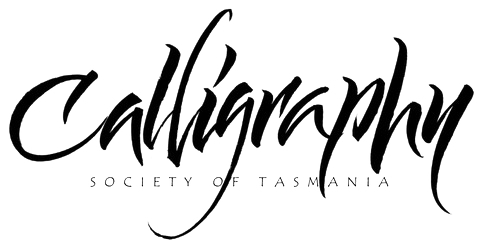


What equipment will you need to bring?
Your basic kit is
- Ruler, pencil, eraser, sharpener
- Book or paper for notes
- Writing paper
- A couple of paperclips
- Pilot Parallel Pen green 3.8mm (broad edged pen)
- Card to put under your writing paper
- Apron
- Cotton rag or paper towel for spills and clean up
- The tutor may advise more materials are required, check the workshop materials list on the website.
Our recommendations
A mechanical pencil ensures you have a sharp point all the time. HB and 2B regular pencils with a sharpener are fine. A Stanley knife is a great tool for sharpening.
Any smooth surfaced paper that does not absorb or repel ink can be used for practice. Test your paper. If the ink bleeds away from the ink line you draw, or it runs across the page, that paper is not suitable. Photocopy paper may work fine. Test it out. We have found Art tec Bond Layout (Artery) or Micador layout paper (Big W) and Mont Marte Butchers Paper (Shiploads) are good brands to practise on. Buy an A3 pad in preference to A4. Tear the sheet out of the pad to write on.
A Pilot parallel pen is a type of fountain pen. It has a broad edged nib, the green one is 3.8mm wide. It has a cartridge of ink you insert into the barrel. Follow the instructions on the package for inserting the cartridge. Do not discard anything from the package! This is a great pen for practice, easy to use and replacement cartridges are available. Buy at Artery or online.
You put card or a thick wad of paper under your writing sheet to provide a cushioned pad that is nicer to write on than a hard surface.
Optional is the use of a slopeboard. It is a board angled at about 40 deg on your table helping you maintain an upright posture and letting the ink flow from the pen. It should be larger than A3 and have some way of being propped up on the table.
If you use a dip nib, you’ll also need
- Nib and pen holder
- Non-waterproof ink eg Parker’s Quink, Ecoline, Sumi
- Container for water
- Cotton rag
- Cheap small brush to feed the pen
NOTE: Please don’t go out and buy lots of stuff that you may not use again. Wait to see what others use and recommend. We are happy to share our materials if required.
While we mostly use broad edged nibs, there are also pointed nibs. There are many brands to choose from. Wait for advice before you buy anything.




